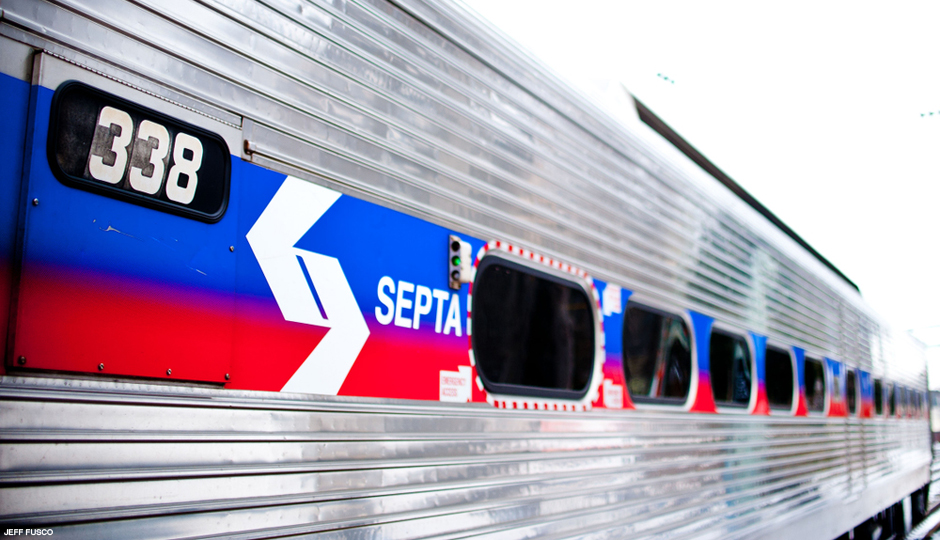The Truth About SEPTA’s Doomsday Scenario
Three weeks ago, SEPTA General Manager Joseph Casey went to Harrisburg and laid out what’s become known as the “doomsday scenario” before the state Senate Transportation Committee.
Last Wednesday, he shared it with a group of transporation industry professionals in Philadelphia by way of reminding them that Pennsylvania woefully underfunds its transportation infrastructure–not just SEPTA, but the state’s roads, bridges and other mass transit systems.
The presentation, which lays out a vision of a dramatically shrunken mass transit system, has led at least one state legislator to criticize SEPTA for, in effect, crying wolf, reminiscent of the agency’s annual pleas for assistance in the early 1990s that became known inside the industry as its “annual going-out-of-business sale.”
I remember that drill: Each year, SEPTA would roll out a service plan that did something like eliminate a bunch of bus routes, cut back late night service, eliminate Sunday service, or some combination of all of these, then say, “Fund us or your service gets it.” The end result was that Gov. Ed Rendell would reach into a hat somewhere and pull out money for the agency. End of crisis, until next time.
The state thought it fixed all that with a transportation funding bill in the late 1990s that hinged on slapping tolls on I-80. But the Feds said “No way!” to the state’s application–three times–and now, we’re back to square one on transportation funding, with the added bonus of a debt-ridden Turnpike Commission.
Which brings us back to that “doomsday scenario.” A bill to fix this problem is now before the legislature; in its ideal version, it would provide $2.5 billion annually for critical infrastructure needs. Casey’s presentation is designed to show what would happen if it doesn’t pass.
But what we need to understand is that the doomsday scenario isn’t some slash-and-burn retreat, no more than the state’s highways will suddenly turn to gravel as a result of no maintenance. Instead, that scenario describes what happens when you put maintenance, repair and equipment replacement on a starvation diet.
We can actually begin the wasting-away process with something that took place this weekend: emergency repairs on a 115-year-old railroad bridge that carries the Media/Elwyn Regional Rail line across Crum Creek in Delaware County. SEPTA has known for some time that this bridge is close to failing and needs to be replaced. If it’s not, kiss Media/Elwyn service goodbye.
Under the “doomsday scenario,” that happens in fiscal 2015, when SEPTA can no longer keep applying Band-Aids to the viaduct. And 2015 is year two of the 10-year starvation diet.
In year one—the fiscal year that began July 1–Regional Rail service to Cynwyd is eliminated and the Route 10 and 15 trolleys converted to bus operation. Aging trolleys operating on Route 10 would be assigned to the remaining subway-surface routes, and the rebuilt PCCs on Route 15 mothballed.
In year four–fiscal 2017–the Norristown High-Speed Line becomes the Bryn Mawr High-Speed Line as service is trimmed to the route’s busiest segment. Here, too, a failing bridge comes into play–the one that carries the line across the Schuylkill to Norristown–but other structural repair needs also contribute to the move.
The next year, retirement of obsolete locomotives leads to the elimination of Doylestown service beyond Lansdale and weak bridges and increased costs from new train control systems bring Chestnut Hill West service to an end. The Kawasaki trolleys in the city are retired and the remaining trolley routes converted to buses–so much for the trolley subway–and their suburban siblings’ advanced age lead to service cuts on the Media and Sharon Hill lines. Ridge Spur service also gets the ax so that enough vehicles can remain in Broad Street main line service.
What remains around limps along until the 2023 day of reckoning in Casey’s script. That’s when the Silverliner IV Regional Rail cars reach the end of their useful life. Since there would be no money to replace them, most of the rest of the Regional Rail network shuts down, and service on the four remaining lines–Trenton, Lansdale, Norristown and Malvern (no longer Thorndale)–is dramatically reduced to match fleet availability. Trolley service to Media and Sharon Hill ends, as does Broad Street express service.
(All this assumes some ancient transformers on the Reading side don’t blow. If they do, they take half of the Regional Rail service with them instantly. SEPTA is now working on replacing some of the most critical ones, but all of them need replacement, as they all date to 1930.)
And so a great transit system slowly starves to death. What’s left then is basically a bus system with skeletal rail service.
And with the slow death of SEPTA comes the slow strangulation of the regional economy: 60,000 jobs lost in the city alone and almost as many in the suburbs, according to figures from an Econsult Solutions study. And that’s not counting the additional damage caused by even more bridges that are closed or weight-restricted on top of the ones PennDOT flagged this year.
A 10-year narrative of decline is less dramatic-sounding than a “doomsday scenario,” true. But it’s no less horrible. Harrisburg does need to get busy to avert this–now.
Veteran reporter-editor Sandy Smith has been scribbling away since his youth, when The Kansas City Star hired him as a summer reporting intern out of high school. Part of the team that launched an award-winning newspaper at Penn and founder of another at Widener University, he is currently editor-in-chief of the Philadelphia Real Estate Blog and contributes to Philadelphia magazine’s Property blog as well as other local publications.



